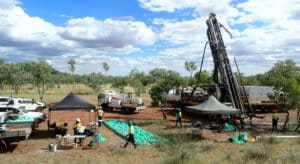With Glencore set to downsize Mount Isa in 2025, what is the way forward for the North West Minerals Province?
Glencore’s recent announcement that its Mount Isa copper operations and Lady Loretta zinc mine would close in 2025 sent shockwaves through the Queensland mining industry.
It signalled the end of two of Australia’s most iconic mining operations, which have supported the world with a sustainable supply of copper, lead, zinc and silver for up to 60 years.
In the wake of Glencore’s announcement, Queensland Premier Annastacia Palaszczuk announced a $50 million support package for the Mount Isa region and those affected by the impending closure.
This included up to $20 million, to be matched dollar-for-dollar by Glencore, for an economic structural adjustment package for Mount Isa and north-west Queensland.
The Queensland Government will also provide $30 million to support exploration in the North West Minerals Province across the next five years.
It is encouraging that the Queensland Government responded so quickly to Glencore’s announcement, but the way it allocates its resources is critical to ensuring Mount Isa and the nearly 1200 workers set to be affected by the closure receive the appropriate support.
And with the North West Minerals Province boasting such a strong pipeline of advanced development projects, the precise allocation of funds could be a boon for the region’s mining future.
Transition Resources founder and managing director David Wilson said it is vital to focus attention on near-term mines.
“Directing funds to exploration creates mines in 10 or 15 years,” Wilson told Australian Mining.
“But allocating funds to near-term mines now will generate replacement jobs in a timeframe that matters to these 1200 workers. It also produces ore for toll treating at the Mt Isa concentrator and creates much-needed economic stimulus for the region.”

When Glencore closes its Mount Isa underground copper operations in 2025, it also intends to shut down its concentrator – a processing plant seen as a key asset for the wider Mount Isa mining community.
Building new copper concentrators is capital intensive, so providing near-term producers an opportunity to feed their ore through Glencore’s existing concentrator is not only significant for their futures but also Queensland’s overall mineral exports.
It also sustains jobs.
“By keeping the Mt Isa concentrator going, potentially for at least another four years, it saves hundreds of jobs,” Wilson said. “This gives everyone time to find alternatives, and for the government to accelerate the new Queensland Critical Minerals Strategy.”
Wilson said the continued operation of Glencore’s copper concentrator enables near-term mines in the region to enter production – by feeding ore to the Glencore mill – subsequently creating replacement jobs for the 1200 workers.
The region is rich with near-term mining opportunities suited to toll treating development models. These often require only modest up-front capital to bring online, because there is no need to build processing plants or tailings facilities.

“Regardless of whether the Glencore concentrator stays open or not, and the preference is for it to stay open, there’s still an argument for the Queensland Government to fund and bring other near-term mines forward, by utilising toll treating options available at other processing plants in the North West Minerals Province,” Wilson said.
Wilson’s research identified at least 15 million tonnes of copper ore in the North West Minerals Province that could be funded and progressively brought online from 2025, subsequently feeding Glencore’s concentrator.
Near-term producers include Wilson’s own company Transition Resources, Austral Resources, Hammer Metals and Aeris Resources at its Barbara underground project.
Aeris executive chair André Labuschagne said a prudent way for the Queensland Government to support the North West Minerals Province would be – as Wilson suggested – to fund projects that could produce in the next two-to-three years.
“If you want to be serious about having replacement sources or suppliers to that (Glencore’s) processing facility by 2025, a couple of things need to happen,” Labuschagne told Australian Mining.
“The government will have to look at investing in start-up operations … There are enough opportunities out there where they should be saying, ‘How do we help companies get these mines up and running by 2025 to be able to keep that (Glencore) facility open?’.
“Exploration is always good, and we should always invest in it, but if you really want to ensure that facility’s still there, invest in development mines and help them gain approvals in time because approvals these days can take two years or longer.”

Wilson proposes a two-phase funding process to kick-start the North West Minerals Province beyond Glencore’s 2025 Mount Isa downsizing.
Phase one would see the Queensland Government provide grants to qualifying mines of up to $10 million, to accelerate feasibility and pre-development activity. Additional grant funding of up to $10 million (matched dollar-for-dollar by each company) would then follow on a decision to mine.
“Given what is at stake here, these sums are extremely modest,” Wilson said. “For this outlay, the Queensland Government sets in motion a process that will generate replacement jobs for the Mt Isa workforce and generate approximately $3 billion of potential revenue from 2025 to 2030.
“That would not happen without this support.”
Additional measures include subsidised ore deliveries to encourage toll treating, which would tip the economic balance at many projects away from building new processing plants towards utilising existing regional infrastructure.
“And by using existing infrastructure we get an environmental dividend – because we are not building as many processing plants,” Wilson said.
It is not just one or two local companies being supported by this funding, which is key to Wilson’s proposal. After breaking down the cost-benefit all the way through the value chain, including royalties and taxes, the net benefit is substantial.
“But the most profound flow-on effects are social – providing job security for workers and their families, so they stay in the region and help sustain the rich social fabric that binds these remote Australian communities,” Wilson said.
“By contrast, the cost of not providing this targeted support is immeasurable.”
“There is a one-off opportunity here for the Queensland Government to achieve a remarkable social, economic and environmental return on taxpayer funds, in ways rarely available to governments.”


